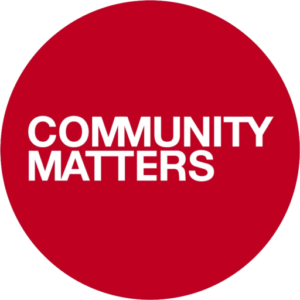Workforce Planning in Health and Care: How Apprenticeships can help
Workforce planning is one of those things in life that could appear to be the answer to all your problems, or a nightmare errand that you can’t get out of. And like many similar things in life, it is probably placed somewhere in the middle, with the potential to swing either way depending on how it is done.
Careful workforce planning is particularly relevant to health and care sector, which is undergoing rapid transformation, driven by technological advancements, policy shifts, and evolving patient needs, including the fact that people are living longer (not complaining!) resulting in increased dependency and demand on the health and care sector.
Health and care organisations must take an innovative approach to workforce planning to adapt to these changes: they need new skills, enhanced capabilities, and innovative approaches to make sure they continue to deliver the best care for their service users. This requires careful planning of workforce, ensuring staff are equipped with the necessary expertise to meet current and future challenges.
My organisation, Community Matters, has been supporting health and care organisations for the last 15 years. We have seen some very effective, structured workforce planning being undertaken, as well as those that are done just as a tick-box exercise. A structured approach to workforce planning should not increase the demand on managing an organisation; on the contrary, it should help managers save time.
Navigating workforce planning: where to start (and finish!)
Workforce planning should not be a task that is included in a manager’s job description. It should be a continuous process, involving the whole organisation. Employees at all levels hold valuable insights into the organisation’s operations, challenges, and service delivery needs. Therefore, engaging the workforce in the planning process helps develop with a comprehensive and practical workforce strategy that aligns with real-world demands.
The process begins with defining the workforce plan: what is the problem you are trying to solve, why do you need a workforce plan, what is the scope of the workforce plan? This should lead to mapping the service change and defining what your vision is. Within this you should understand and define what your current position is and where you want to get to. What options do you have, what are the benefits, are there any changes or events that may impact on your plan or the service?
The next step is to map the new service and define what its workforce requirements are. Some organisations, understandably, try and fit this to their existing workforce: using the roles that are already there, with the competencies and skills that already exist. Some others prefer, and have the flexibility to, start on a blank piece of paper by looking at the skills needed to deliver the changed service, what roles can be created with the required skill-set and the types and numbers of staff that can fulfil these roles. This could include an activity analysis – it sounds boring but is actually a very good opportunity to engage your team into an interesting conversation about specific activities that are part of the service delivery process. This should look at the types of activity, what the demand for each activity is likely to be, what the competencies to deliver each of the activities are, and which roles (existing roles but don’t shy away from defining new roles or new ways of working) have these competencies.
So, you know where you want to get to, what you need to change, and who you need to deliver. Next step is to see if who you need to deliver the new changed service are available. You may want to think about the age profile and turnover of certain roles within your organisation, what skills your staff currently have and cost of retraining, redeployment and/or recruitment activities. Apprenticeships are a valuable tool in workforce planning, offering a structured way to upskills employees and attract new talent. They can help you grow your own workforce and skillset with perfect alignment to your organisations’ needs, with costs associated with the training and development being paid for you.
The next step is to capture all this intelligence in an action plan. Developing an action plan to address these issues and implementing a system for continuous monitoring and adjustment ensures that the workforce remains adaptable and prepared for the future. You may want to consider engaging an apprenticeship provider who understands your sector when you are developing your action plan as they could help you identify how your aspirations can be delivered using ready-made standards to create a fit-for-purpose workforce.
Apprenticeships: developing your own workforce that stays with you for longer
Apprenticeships provide a sustainable way for health and care organisations to develop their workforce. By offering structured, on-the-job training combined with formal learning, apprenticeships help employees acquire the right skills, knowledge, and values that align with organisational priorities. Some apprenticeship providers, like Community Matters, engage employers in defining what additional modules could be added to the apprenticeship standard that may benefit their apprentices to fit better with the organisational requirements. Investing in apprenticeships boosts employee retention, ensuring a skilled and committed workforce. Additionally, apprenticeships are centrally funded by the government, reducing the financial burden on employers. With recent changes to apprenticeship funding rules, functional skills are no longer a mandatory requirement, making apprenticeships even more accessible.
In a rapidly evolving sector, workforce planning must be a continuous and collaborative effort. Apprenticeships offer a strategic solution for developing a skilled and dedicated workforce, helping organisations adapt to change while improving retention and service quality. Health and care organisations who incorporate apprenticeships into workforce planning will not only future-proof their workforce but also enhance service quality and staff retention. Now is the time to make apprenticeships a key part of your workforce strategy.

Leave a Reply
Want to join the discussion?Feel free to contribute!